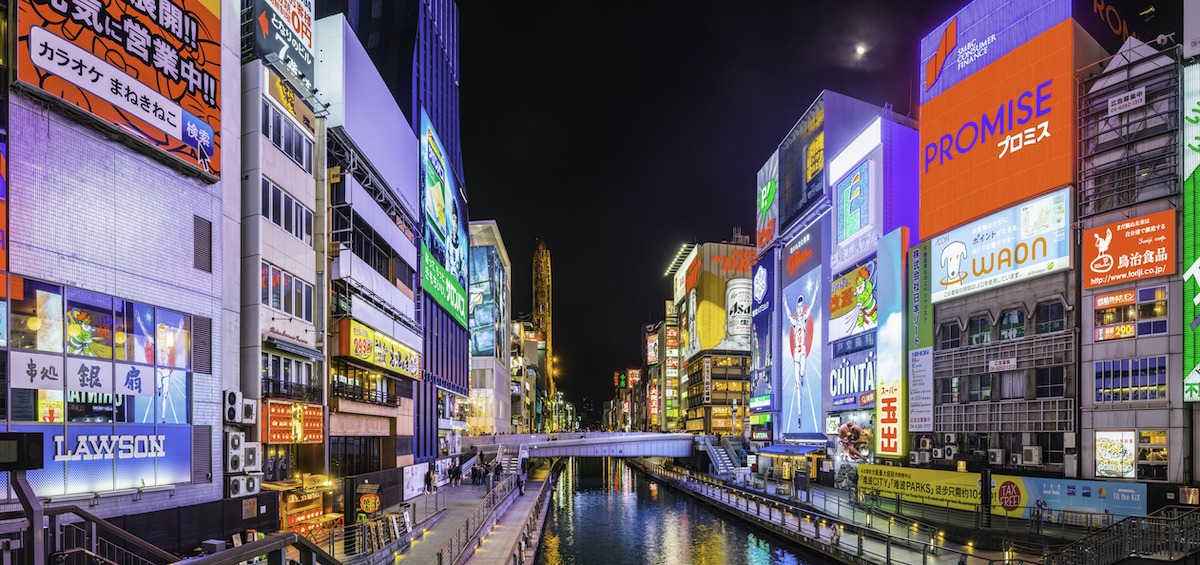
Learning without borders: Argos Multilingual and Moodle US sign partnership
Blog
・13 min read
How to Succeed in One of the World’s Most Challenging Translation and Localization Markets
Few languages represent a greater challenge when it comes to translation than Japanese. Both in terms of businesses making in-roads into the country and Japanese companies looking to expand off the island. Japanese translation difficulties are so unique it merits an entire specialized category of translation.
Doing it right is a huge undertaking – and a huge opportunity. But what exactly makes Japanese translation challenges so unique? To understand the full complexity, it helps to examine it from two perspectives: Entering the Japanese market and going international from the Japanese homeland.

Properly translating your content into Japanese requires an understanding of three different principles that, while not entirely unique to Japan, are all amplified to their highest level.
Because Japanese and English have completely separate linguistic origins, many words in one language have no direct translation in the other. For example, the Japanese word “Otsukaresama” literally means “You are tired.” Yet in the Japanese context it means “I appreciate all your hard work” and is usually used to say goodbye to coworkers at the end of the day. It’s an essential term for many business situations. But there is no single English word that can epitomize the essence of “Otsukaresama” in all its potential contexts and nuances in Japanese localization.
Another issue is that of tone. While there are ways to show formality and informality in English, Japanese has many more levels and nuances of tone. Trying to translate into these nuances from another language without such distinctions is particularly tricky.
English has countless variations, beyond even the American English vs British English difference. This variety means there are many acceptable ways to phrase (or even spell) things. Japanese, however, has no such flexibility. There is no tolerance for variations from the common practice, making near-approximations completely unintelligible to Japanese speakers.
To meet this linguistic perfectionism, In-country translators are key. Language is a living thing, changing from year to year (or even month to month) and people who have been out of Japan for even a short time may soon find themselves out of date with current words and phrases. This goes beyond just language; political correctness and other societal conventions could also affect your message’s success.
In-country translators are also able to adapt your material to sound more “Japanese.” A direct word-for-word translation from English, while technically perfect, could be off-putting or jarring to your Japanese audience. You may have heard that the Japanese don’t like to say “no” directly. If, for example, you have a document that says “We can’t do that” the Japanese translation should read more like “That will be difficult”. This still means “no” to your Japanese client, but it will avoid giving offense. A translator or team who can avoid such errors will save you a world of hurt.
Many helpful programs (including computer-assisted translation (CAT) tools) have made translation quality control much easier for other languages, but they are still not sufficient for Japanese. This means that all character and grammar checks must be completed manually. The human element often leads to inconsistencies and mistakes that need double and triple checks to be smoothed out. These checks bog down the process and often increase costs.
There has been exciting progress made in checking tools developed specifically for Japanese. These new programs have proved to give accurate results, cut down time and money spent on manual review, and increase overall quality. As these tools continue to improve, we expect to see the time required for Japanese localization to continue to decrease without compromising product quality.

A language composed of so many linguistic complexities combined with the nature of the translation work needed makes moving from Japanese into other languages challenging. Here are three main points.
90% of Japanese to English translation needed in Japan is for hardware such as cars and precision equipment. Manuals are the name of the game. These types of projects often have hundreds of pages and strict deadlines. Legal documents (such as contracts with a foreign firm) or standards (such as ISO 9000) are the most common Japanese to English projects.
A lack of native English speakers in Japan means many companies work with Japanese speakers of English for their translations. And a non-native speaker equals lower accuracy and quality. Some companies believe that as long as the content is “understandable” it is good enough. Unfortunately, they fail to realize that a poor translation can affect their company’s image and business dealings. And even worse, often what they assume is an “understandable” English translation is actually confusing or incomprehensible for even native English speakers. For example, a popular 1991 Japanese video game, Zero Wing, made the following infamous mistake in its English translation.
Japanese
連邦政府軍のご協力により、君達の基地は、全てCATSがいただいた。
Original English Translation:
All your base are belong to us.
Correct English:
With the cooperation of Federation Forces, all your bases now belong to us (lit. CATS has received all of your bases.)
Translation quality is even more challenging for languages other than English. Japan trades with China, Korea, and many other countries throughout Asia. Because English is studied in school, there are often a good number of people available for the review process. However, this is not the case with most other languages.

Working with a translation agency with broad international experience and a presence in Japan brings many benefits and solutions to these challenges. In fact, here at Argos, I have seen quite a few requests to rework translations because other companies weren’t up to the task. If you don’t want to take any costly detours with your project, have a look at our proven process that allows us to succeed on the first try:
This is actually the most critical part of our workflow: Each client has very specific needs and preferences. To meet your expectations, we set up meetings to carefully listen. We’ll never force you to agree to an out-of-the-box solution, instead we develop plans that are tailored to fit your specific project. It might take a little time to fully understand all the nuances of your needs, but it is worth it when we get the perfect result in the end.
As an experienced translation and localization provider, we know that there are many “right” translations and the appropriate one must be chosen based on your intended use. For example, how do you translate the term “Change Agent” made famous by Peter Drucker? Neither the word-for-word translation of エージェントを変化させる” (change of the agent) or simply the phonetic “チェンジエージェント” (chenji e-jento) work. While technically correct, these translations do not capture the nuances behind the concept. So, in this case we’d probably use “イノベーション リーダー” (innovation leader) since Drucker understood “Change Agent” as a key person/corporation that drives drastic change in a good direction.
As exemplified by our ISO 17100 certification, we have very strict requirements for screening our freelance translators. They must be native speakers of the target language and currently living in the country. This requirement sets us apart from many Japanese single-language vendors and it guarantees that only up-to-date, high-quality linguists work on your project.
To assess our candidates, we require them to work on a trial project in the field of their subject matter expertise. We review the results using objective and numerical criteria in accordance with the ISO standard. Only very well-qualified linguists will pass these strict tests and we never use them for any fields other than the ones we have assessed them for.
For many clients, translation is only one struggle they are facing. Desktop publishing (DTP) and video localization can be a headache as a simple one-on-one translation often does not work in these cases. But we have ample experience in the creative process of localizing your content, whether it gets printed or published as a video. We will make sure the Japanese version of your content will look perfect for collateral in regards to font type and size, line breaks, and kerning, which describes the process of adjusting the spacing between characters in a proportional font, usually to achieve a visually pleasing result. For video content, we’ll use concise expression and notation methods specific to Japanese subtitling.
Our international team offers big benefits for you if you are looking for a translation partner. We have offices in Asia, the Americas, and Europe. Japanese Localization doesn’t mean you should only involve native Japanese people. Having a wide range of personnel from different cultures available to consult can be a huge help. I believe that deliverables created by a multi-cultural team can breathe the air of both, internationalization and localization, into a localized Japanese product.
Are you a company with a presence in Japan? Want to expand to working directly with Japanese clients? Let us leverage our global reach for your company’s needs.
What to read next...
Want to know more?
The latest industry news, interviews, technologies, and resources.
View all resourcesGet in touch
We are committed to giving you freedom of choice while providing subject matter expertise and customized strategies to fit your business needs.
Contact us